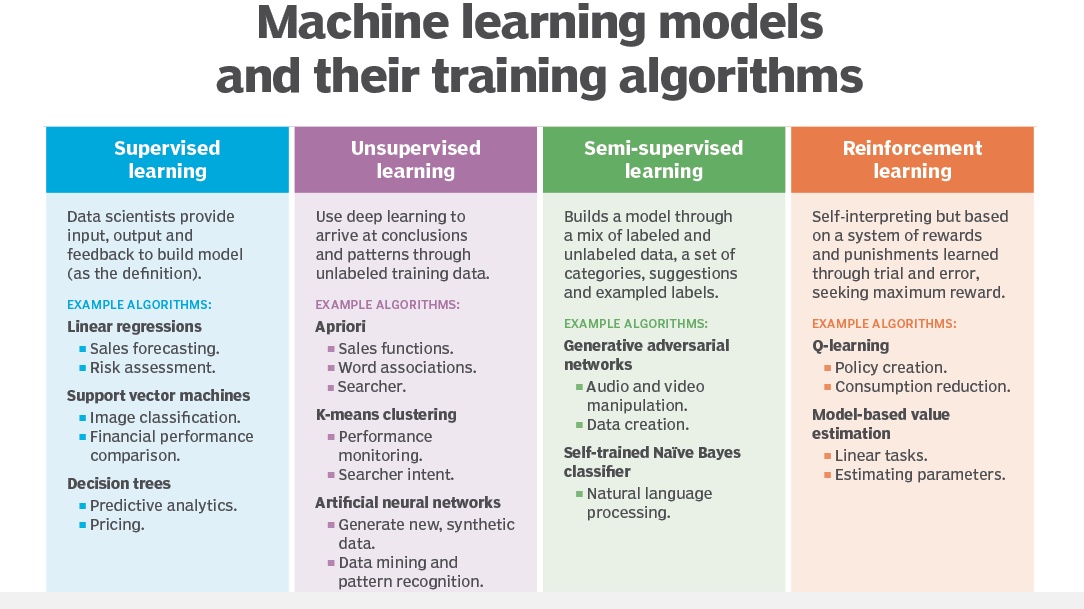Introduction:
Machine learning, a subset of artificial intelligence (AI), has gained immense popularity for its ability to empower systems to learn and improve from experience without explicit programming. As the field continues to evolve, it is crucial to understand the diverse approaches within machine learning. In this article, we will explore the four main types of machine learning and shed light on their unique characteristics.
- Supervised Learning
Supervised learning is one of the most common types of machine learning, where the algorithm is trained on a labeled dataset. This means that the input data is paired with corresponding output labels, allowing the algorithm to learn the mapping function from the input to the output. The goal is for the algorithm to make accurate predictions or classifications when presented with new, unseen data. Supervised learning is widely used in tasks like image recognition, speech recognition, and natural language processing.
- Unsupervised Learning
In contrast to supervised learning, unsupervised learning involves training the algorithm on an unlabeled dataset. The algorithm must identify patterns and relationships within the data without explicit guidance. Clustering and association are common techniques in unsupervised learning. Clustering involves grouping similar data points together, while association identifies relationships and associations between variables. Unsupervised learning is frequently applied in recommendation systems, anomaly detection, and data compression.
- Semi-Supervised Learning
Semi-supervised learning combines elements of both supervised and unsupervised learning. In this approach, the algorithm is trained on a dataset that contains a mix of labeled and unlabeled data. The algorithm leverages the labeled data for guidance and generalizes its learning to the unlabeled data. Semi-supervised learning is beneficial when obtaining a fully labeled dataset is challenging or expensive. It is often used in scenarios where only a small portion of the data can be labeled accurately.
- Reinforcement Learning
Reinforcement learning is a type of machine learning where an agent learns to make decisions by interacting with an environment. The agent receives feedback in the form of rewards or penalties based on the actions it takes. The objective is for the agent to learn a strategy that maximizes cumulative rewards over time. Reinforcement learning is commonly applied in gaming, robotics, and autonomous systems. It allows machines to learn optimal behavior through trial and error, adapting to changing environments.
Conclusion:
Understanding the four types of machine learning is essential for navigating the diverse landscape of AI applications. Whether it's making predictions with labeled data, uncovering patterns in unlabeled datasets, leveraging a mix of both, or learning through interaction with an environment, each type of machine learning has its unique strengths and applications.
For more insights into the world of machine learning, visit at https://www.tousif.me/].


No comments yet